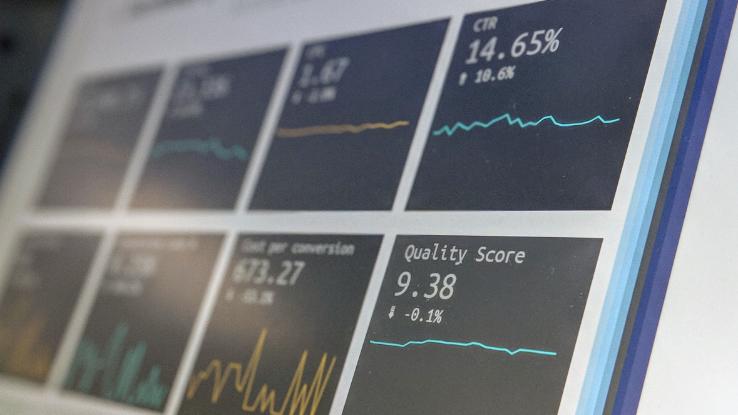How to Find Continuous Compound Interest Corrianne

If you've heard the term "compound interest" before, you most likely heard it in the context of certain types of loans or credit card interest. It's a common concept to run across when you're dealing with these types of financial products — but did you know it can also apply to the investments you make?
It can be tempting to think of compound interest in a less-than-favorable light. After all, when it applies to loans and credit cards, it's referencing the extra money that you'll owe when repaying those debts. But you might be pleasantly surprised to find out that compound interest can work to your advantage when you make certain investments. What precisely is compound interest investing? How much money can compound interest make? We're taking a deeper look at these questions today.

One of the best ways to understand compound interest is to compare it to traditional — or simple — interest. With simple interest, you only earn interest on your initial investment over the course of a certain time period. With compound interest, however, you earn interest not just on your initial investment, but also on the interest your investment previously earned. This may sound a bit complicated, so let's take a look at two examples that illustrate each interest type.
Simple Interest
Say you invested $1,000 at an annual interest rate of 5%. With simple interest, you'd earn $50 each year, so your returns would look like this:
Year one: $1,000 + (5% of $1,000= $50) = $1,050
Year two: $1,050 + (5% of $1,000= $50) = $1,100
Year three: $1,100 + (5% of $1,000= $50) = $1,150
As long as your money remains invested, you'll continue earning 5% of your initial $1,000 deposit each year in simple interest.
Compound Interest
With compound interest, on the other hand, each year you'd earn 5% on whatever amount is in the particular investment account, including previous interest payments. So your returns would look like this:
Year one: $1,000 + (5% of $1,000= $50) = $1,050
Year two: $1,050 + (5% of $1,050= $52.50) = $1,102.25
Year three: $1,102.25 + (5% of $1,102.25= 55.11) = $1,157.36
As you can see, you end up earning more each year with compound interest, simply because the interest you've already earned is factored into the equation along with the principal amount you invested. While the numbers in our example may not seem vastly different, compounding your interest can add up to a tidy sum as your account grows over time. The longer you keep your initial amount invested, the faster your investment grows due to the simple nature of how compound interest is calculated.
Different Types of Compounding Interest Investments

Now that you see how compounding works, it helps to learn where you can invest your money to gradually accumulate compound interest. We'll discuss a few options and ideas here, but first, it's important to point out one additional question you'll want to ask when doing further research and deciding where to invest.
Make sure you find out the compounding period of each investment you look into. A compounding period is the length of time it takes to earn an interest payment. While annual compound periods are common, some investments offer semi-annual, quarterly or even monthly interest payments. The more interest you can gain in the shortest amount of time, the quicker your account value will grow.
Examples of common compound interest investments include:
- High-Yield Savings Accounts: While savings accounts don't always offer the highest returns on an investment in a short amount of time, certain high-yield savings accounts can offer competitive rates in the long run. If you plan to use a savings account to earn for retirement or build an emergency fund, make sure you get the best interest rate possible. The more you deposit, the more interest you'll gain over time with minimal risk.
- CDs: Certificates of deposit, commonly known as CDs, can also earn compound interest — with little to no risk to your investment. While they may tie up your money for a while, building a CD ladder can be a great way to maximize your returns while cutting down on the time between payouts.
- Dividend Stocks: If you're invested in a stock that pays dividends, you can compound your interest by reinvesting your dividend payouts to buy more shares. The more you reinvest, the more shares you'll ultimately own as your stock hopefully continues to increase in value.
- Certain Types of Bonds and Bond Funds: While not all traditional bonds pay compound interest, certain types, such as Series I Savings bonds, do. Other types of bonds, such as bond mutual funds, give you the option to reinvest your interest much in the same way as dividend stocks, which can create the same compounding interest scenario.
What Are the Pros and Cons of Compound Investing?

Just like any style of investing, compounding comes with its own list of pros and cons. First, let's review the perks associated with the best compound interest investments.
- Compounding can be a great way to build a small investment into a larger one if you have a substantial amount of time to allow your investment to grow.
- As the size of your investment grows, you'll enjoy the benefits of not only additional deposits but also earned interest.
- It's possible to earn compound interest through a variety of low-risk investment options, which is great for long-term savings such as retirement.
Choosing compound interest investments can have a few downsides, too. You'll want to consider them carefully before you make the decision to invest this way.
- While some compound interest investments, such as CDs or savings accounts, can be very low risk, others, such as dividend stocks, can be a bit riskier. There's always the risk that the stock you invest in could drop in value unexpectedly. Make sure that you understand any fees associated with investments like high-yield savings accounts, as they may or may not be worth it if you're working with a lower amount of capital.
- Depending on the frequency of your compounding period, enjoying the benefits of this type of investing can take a great deal of time to show profits. It may or may not be the best way to earn the most money on your investment if you intend to withdraw your money on a faster turnaround time.
- Compounding interest can be great if you're an investor, but beware that it can cause you some financial distress if you're on the borrowing side. Compound interest is a common strategy used by lenders such as credit card companies. If you see compound interest mentioned when you're about to take out a loan, know that it means your debt will compound just as quickly as your investment could. Always ask about compound interest before taking out a loan.
johnsonquichademad.blogspot.com
Source: https://www.askmoney.com/investing/compound-interest-investments?utm_content=params%3Ao%3D1465803%26ad%3DdirN%26qo%3DserpIndex&ueid=f9361380-3d0e-49c6-b69e-d9f69baee1fb
0 Response to "How to Find Continuous Compound Interest Corrianne"
Postar um comentário